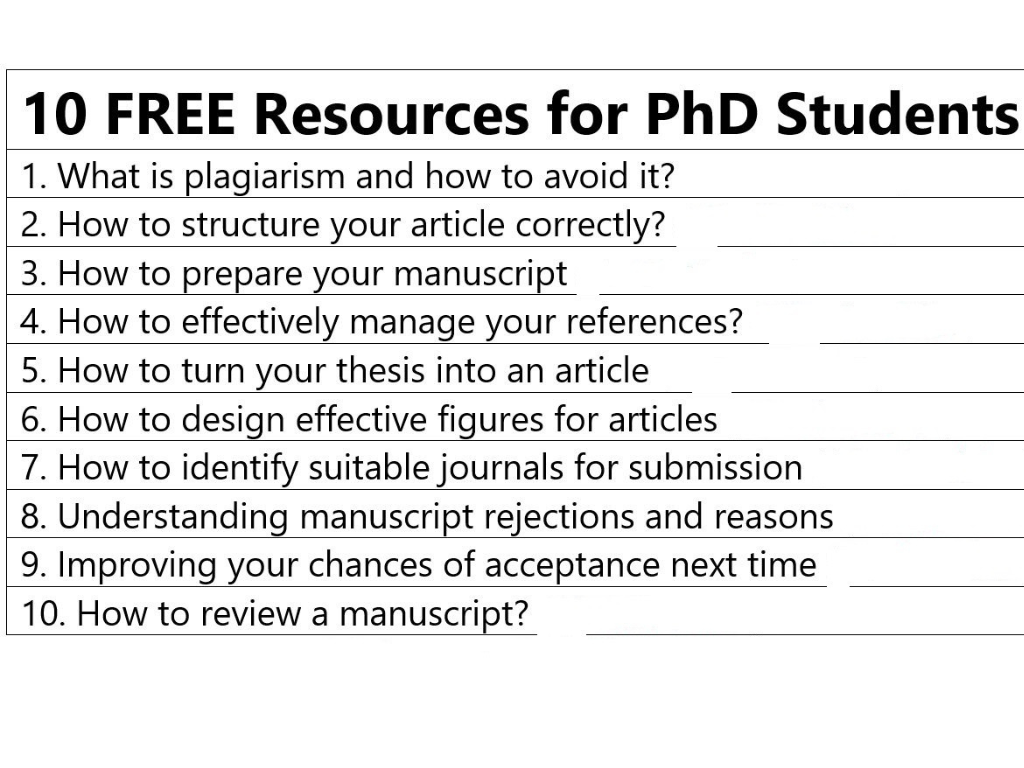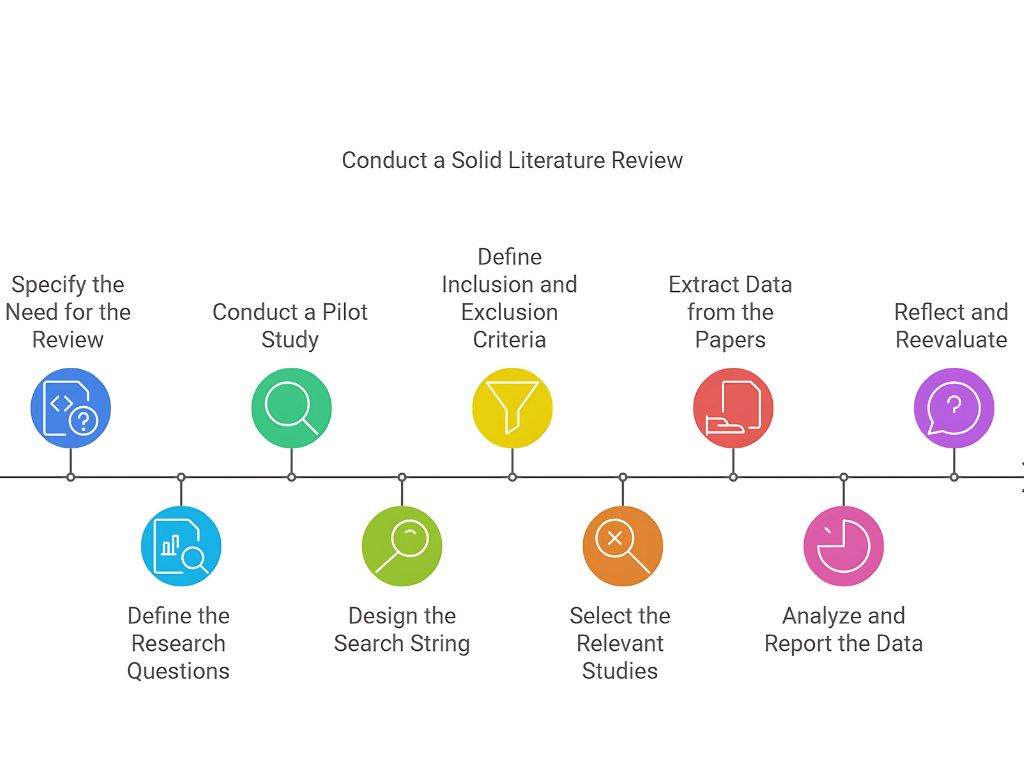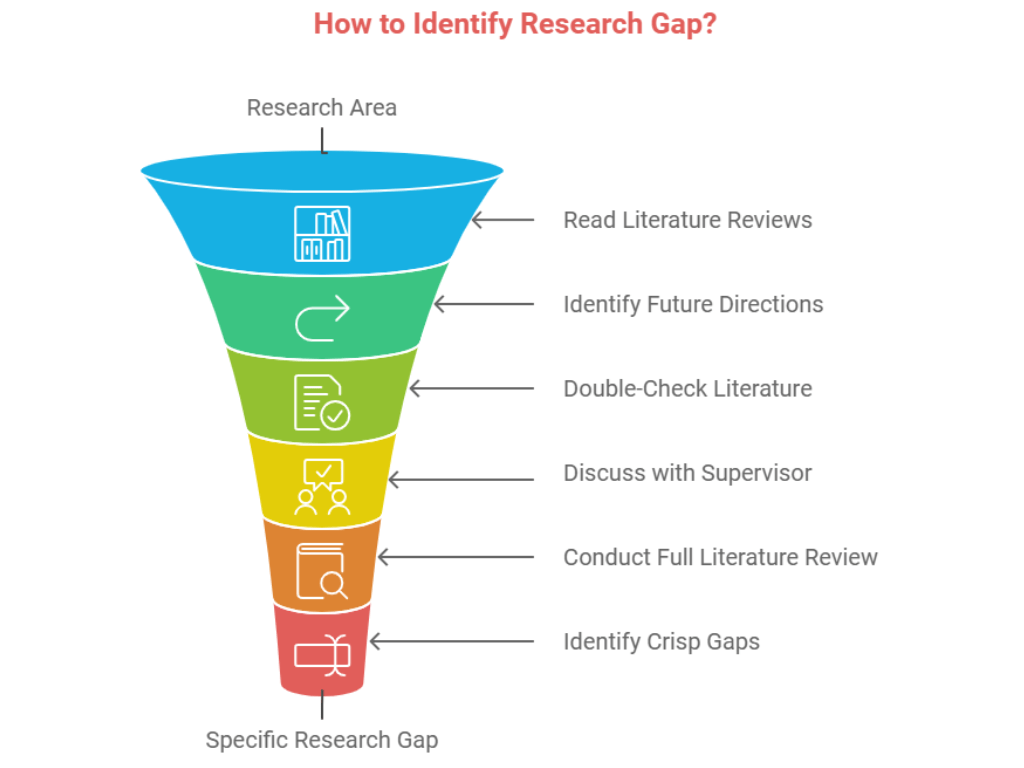Starting your PhD research journey can be daunting, with so many components to understand and steps to take. But fear not—each part of this journey is manageable with the right guidance and resources. Here’s a step-by-step guide to help you along the way.

1. Understanding Plagiarism and How to Avoid It
Plagiarism is a serious issue in academia, affecting both careers and reputations. Unfortunately, many early-career researchers fall into plagiarism traps without fully understanding the boundaries. Did you know that nearly 50% of ethical cases Elsevier handles involve plagiarism? Learning about plagiarism detection and ethical practices early on can save you from common missteps.
Learn more about plagiarism in the following video.
Link: https://researcheracademy.elsevier.com/publication-process/ethics/plagiarism-avoid?
2. How to structure your article correctly?
Every article has a structure designed to make your research clear and accessible. Titles, abstracts, and keywords aren’t just formalities; they’re critical in helping your work get indexed and found by readers. By adhering to a journal’s structure guidelines, you’ll communicate your findings effectively and make a lasting impression on your audience.
Learn more about how to structure your article in the following video.
3. How to prepare your manuscript?
Publishing a paper is a milestone for any researcher. However, rejections are common, especially for first-time submissions. Before submitting, take time to learn the basics of manuscript preparation, from writing style to adhering to journal standards. This effort upfront could be the difference between a resounding “yes” and an “unfortunately, no.”
Learn more about preparing manuscript in the following video.
4. How to effectively manage your references?
Reference managers are essential tools for researchers. They’re more than just bibliography generators; they organize, tag, and help you access all your resources in one place. Tools like Zotero, Mendeley, or EndNote can simplify your workflow by keeping track of all your readings, notes, and citations, accessible anywhere.
Learn more about reference management in the following video.
5. Converting Your Thesis into an Article
Writing a thesis is a big accomplishment, but publishing an article based on your thesis is another challenge. The structure, audience, and focus differ significantly from academic submissions. Here, your goal is to convey your research findings concisely and clearly to a broader readership. This will help you reframe your thesis for journal submission.
Learn more about converting thesis into an article in the following video.
https://researcheracademy.elsevier.com/writing-research/writing-skills/turn-thesis-article?
6. Designing Effective Figures
Great articles don’t just convey data—they tell a story. Figures are crucial in this storytelling, helping readers quickly grasp complex information. Aim for clarity and cohesiveness in your visuals, avoiding the “Frankenstein” effect of cluttered graphics. A well-designed figure can be as impactful as the text itself, summarizing your findings at a glance.
Learn more about effective figures in the following video.
7. Identifying Suitable Journals for Submission
Choosing the right journal can be tricky. A good journal fit aligns with your research’s scope and style. Familiarize yourself with journal metrics and guidelines to narrow down your choices. This way, you’re not just submitting to any journal, but one where your work has the best chance of being read and cited by the right audience.
Learn more about journal selection in the following video.
8. Understanding Manuscript Rejections and Learning from Them
Manuscript rejection is part of every researcher’s journey. It’s important not to take it personally; instead, focus on the feedback you receive. Editors and reviewers often provide valuable insights that can improve your work and guide you to a more suitable publication outlet.
Learn more about manuscript rejection in the following video.
9. Improving Your Chances of Acceptance Next Time
After incorporating feedback and finding a better journal fit, your chances of acceptance increase. Carefully address reviewers’ comments, refine your manuscript, and resubmit. Persistence and attention to detail are key to eventually finding the right home for your work.
Learn more about paper acceptance in the following video.
10. Reviewing a Manuscript: Tips for First-Time Reviewers
If you’re new to peer reviewing, the process can feel overwhelming. Start by understanding the core components of a manuscript, from the abstract to the conclusion, and assess each one critically. Reviewing is a skill that takes time to develop, but it’s also an excellent way to improve your own research writing.
Learn more about reviewing manuscripts in the following video.
Action Step for This Week: If you’re new to research or preparing your first submission, focus on steps 1-3 above. Set up a reference manager, start drafting your manuscript, and consider the structure that best conveys your findings. Small, consistent efforts now will set a strong foundation for your research journey.
Let me know how it goes, or if you have questions along the way!


